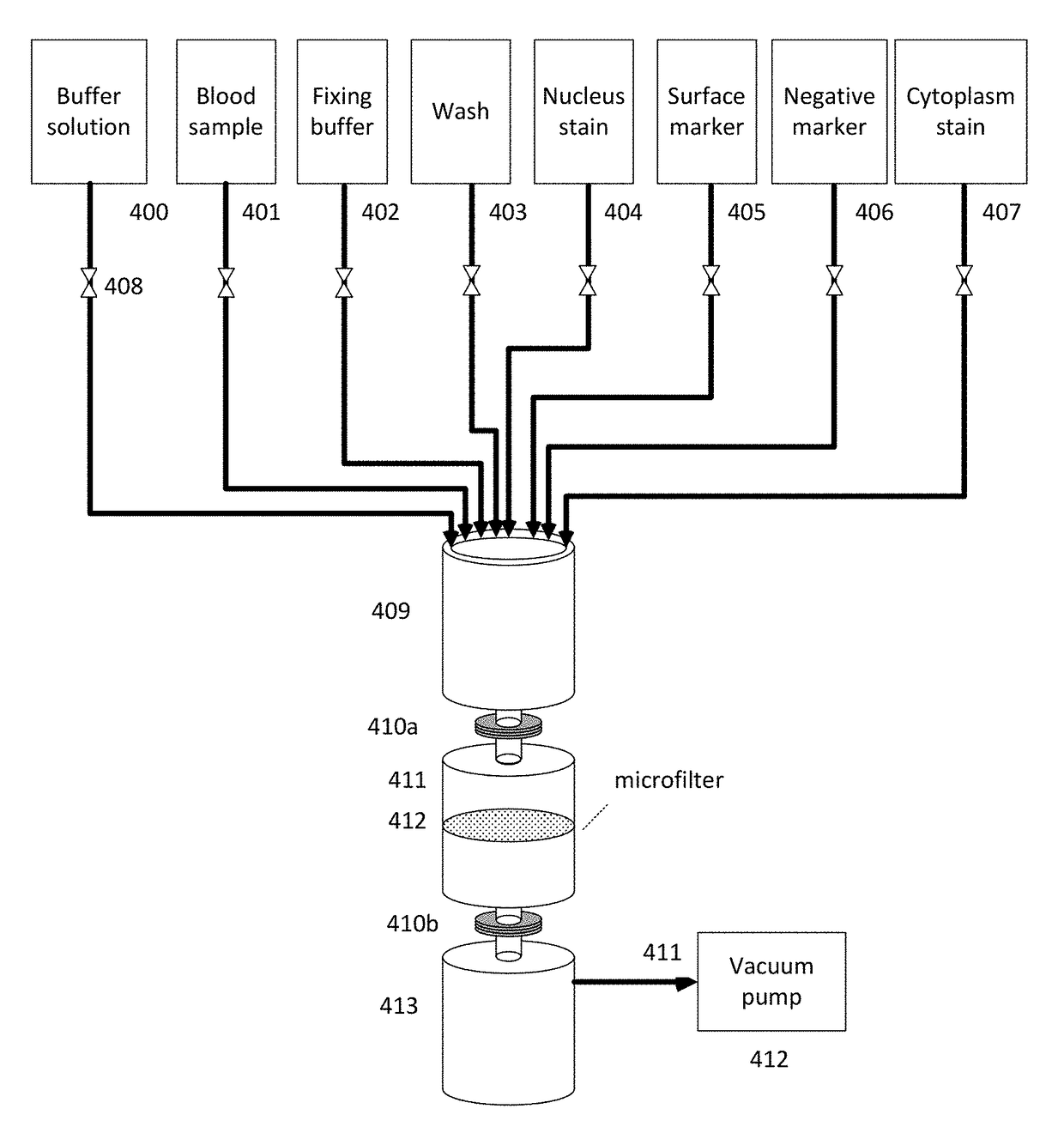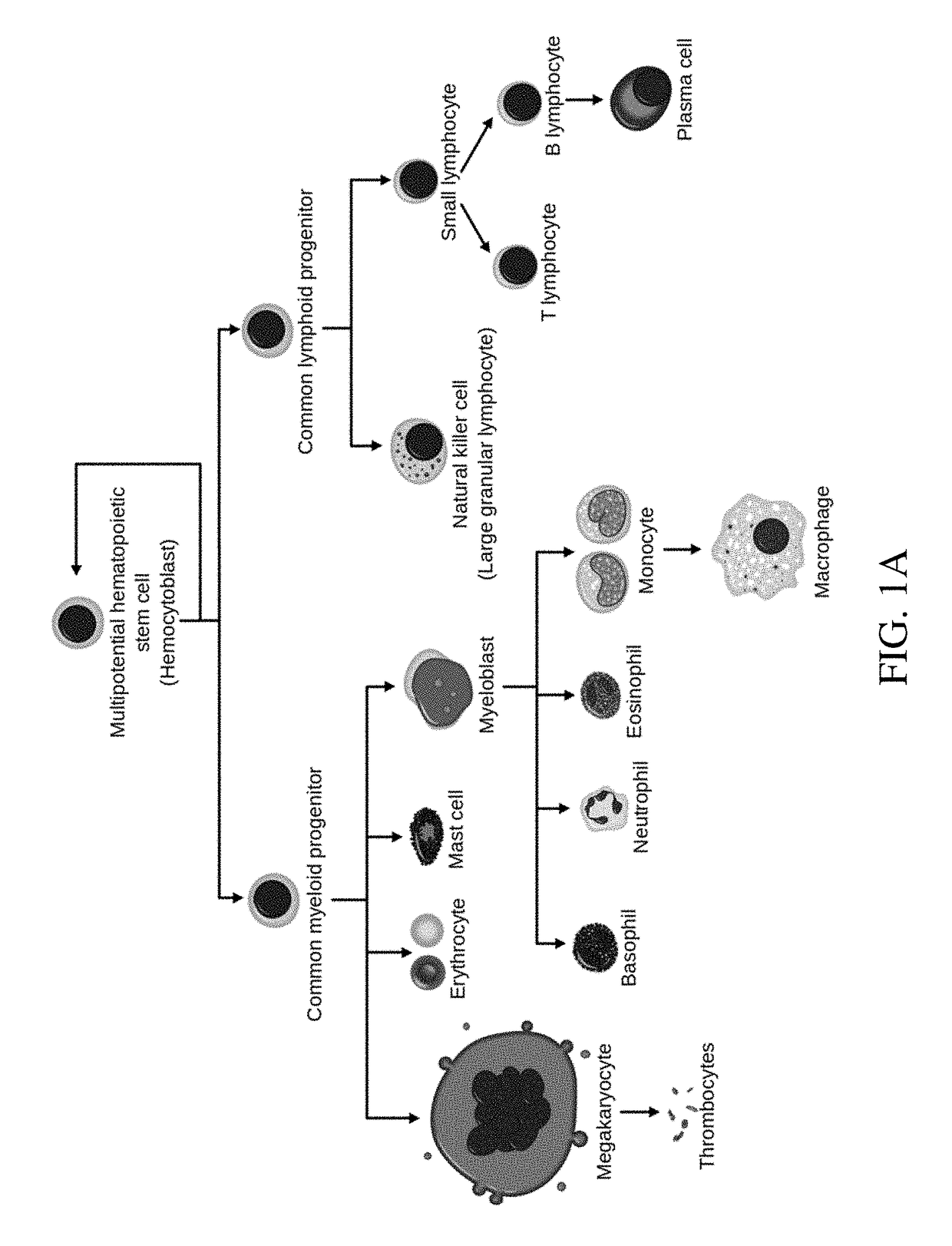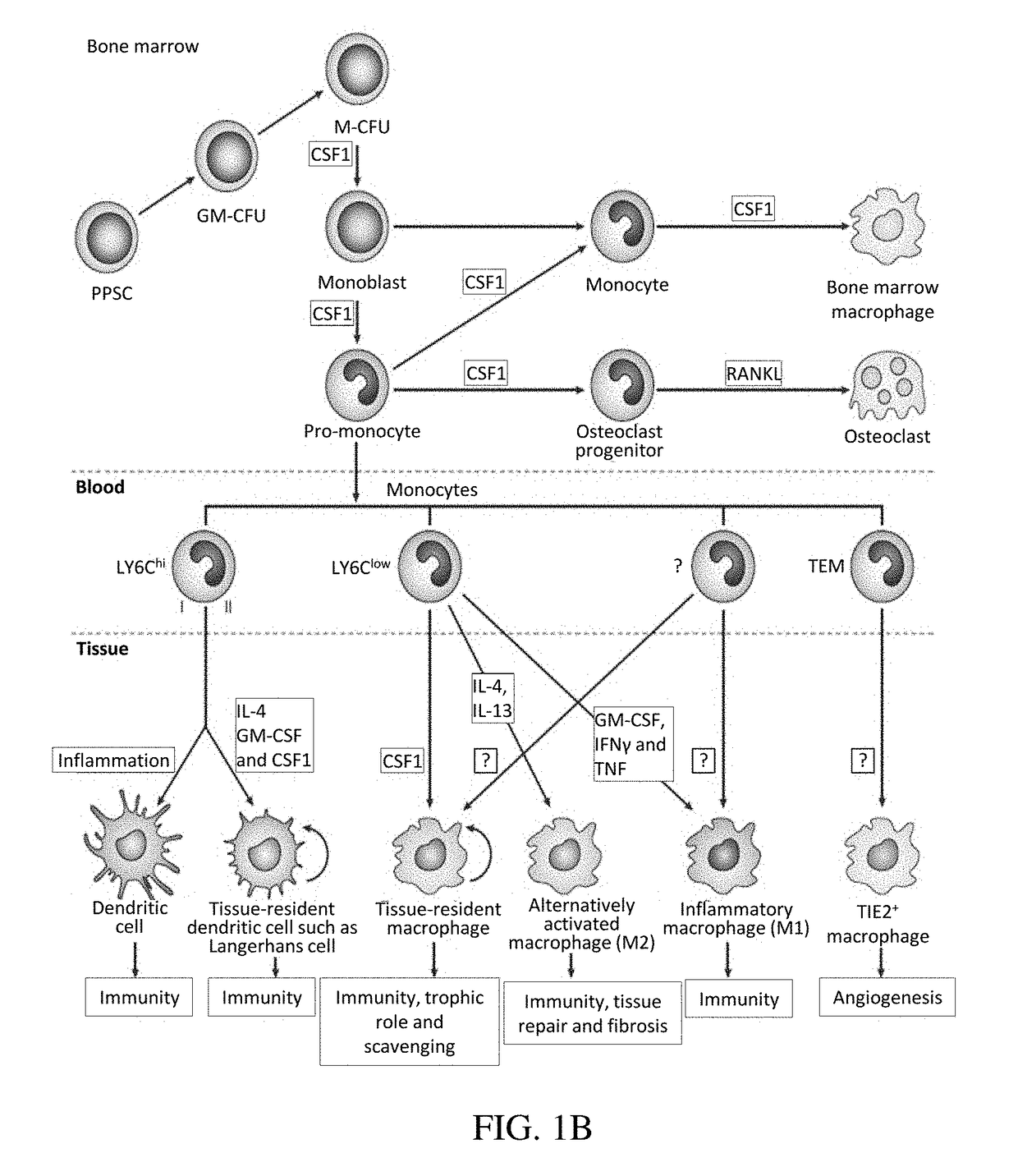Convolutional neural networks for cancer diagnosis
- Summary
- Abstract
- Description
- Claims
- Application Information
AI Technical Summary
Benefits of technology
Problems solved by technology
Method used
Image
Examples
example 1
tration of a Biological Sample
[0284]Blood samples from cancer and normal patients were drawn for enrichment of tumor derived cells using microfiltration. The microfilter comprised nickel-palladium and had the following structural features: 13 mm diameter, 8 um pore size, and 8 um thickness. The microfilter was assembled into a cassette comprising a fitting for an input syringe and a retention syringe.
[0285]For each patient, a 7.5 mL sample of the patient's blood was mixed with fixation buffer. The cassette was attached to a retention syringe, which was subsequently inserted into a syringe pump. An input syringe was then attached to the cassette. All washes and materials applied to the membrane within the cassette were applied through the input syringe. The microfilter was washed with phosphate buffered saline (PBS). The fixed patient blood sample was transferred to the input syringe and the blood sample was drawn from the input syringe, through the microfilter, and into the retentio...
example 2
of Microfiltration-Isolated Cells from a First Panel of Breast Cancer Patients
[0286]A first panel of 4 breast cancer patients had their blood drawn, filtered and stained as described in Example 1. Microfilters corresponding to blood samples from each patient were scanned at 40× in order to determine whether TDMCs were observed using the microfilters.
[0287]Patient Breast-101 (right lumpectomy, right SNB) was diagnosed with breast cancer. Blood was drawn prior to surgery for a right lumpectomy and right sentinel node biopsy. After blood sample filtering, staining, and microscopic filter membrane imaging at 20× and 40× in a four channel fluorescent microscope, 6 image sets (each image set includes four individual fluorescence channels and a composite) from approximately 500 frame sets were selected for detailed observation. At least 3-4 TDMCs were identified in the images.
[0288]Observation of filtered cells from patient Breast-101 demonstrated cells that were DAPI positive (blue channe...
example 3
of Microfiltration-Isolated Cells from Normal Patients
[0296]A panel of normal patients had their blood drawn, filtered and stained as described in Example 1. Microfilters corresponding to blood samples from each patient were scanned at 40× in order to determine whether TDMCs were observed using the microfilters.
[0297]Normal Subject Female Normal-001F: Blood was Drawn from Normal Subject N-001F. After blood sample filtering, staining, and microscopic filter membrane imaging at 20× and 40× in a four channel fluorescent microscope, approximately 500 frame sets were analyzed. As shown by the sample image of FIG. 21, no TDMCs were found in this sample.
[0298]Normal Subject Female Normal-002F: Blood was drawn from normal subject N-002F. After blood sample filtering, staining, and microscopic filter membrane imaging at 20× and 40× in a four channel fluorescent microscope, approximately 500 frame sets were analyzed. As shown by the sample image of FIG. 22, no TDMCs were found in this sample....
PUM
 Login to View More
Login to View More Abstract
Description
Claims
Application Information
 Login to View More
Login to View More - R&D
- Intellectual Property
- Life Sciences
- Materials
- Tech Scout
- Unparalleled Data Quality
- Higher Quality Content
- 60% Fewer Hallucinations
Browse by: Latest US Patents, China's latest patents, Technical Efficacy Thesaurus, Application Domain, Technology Topic, Popular Technical Reports.
© 2025 PatSnap. All rights reserved.Legal|Privacy policy|Modern Slavery Act Transparency Statement|Sitemap|About US| Contact US: help@patsnap.com



